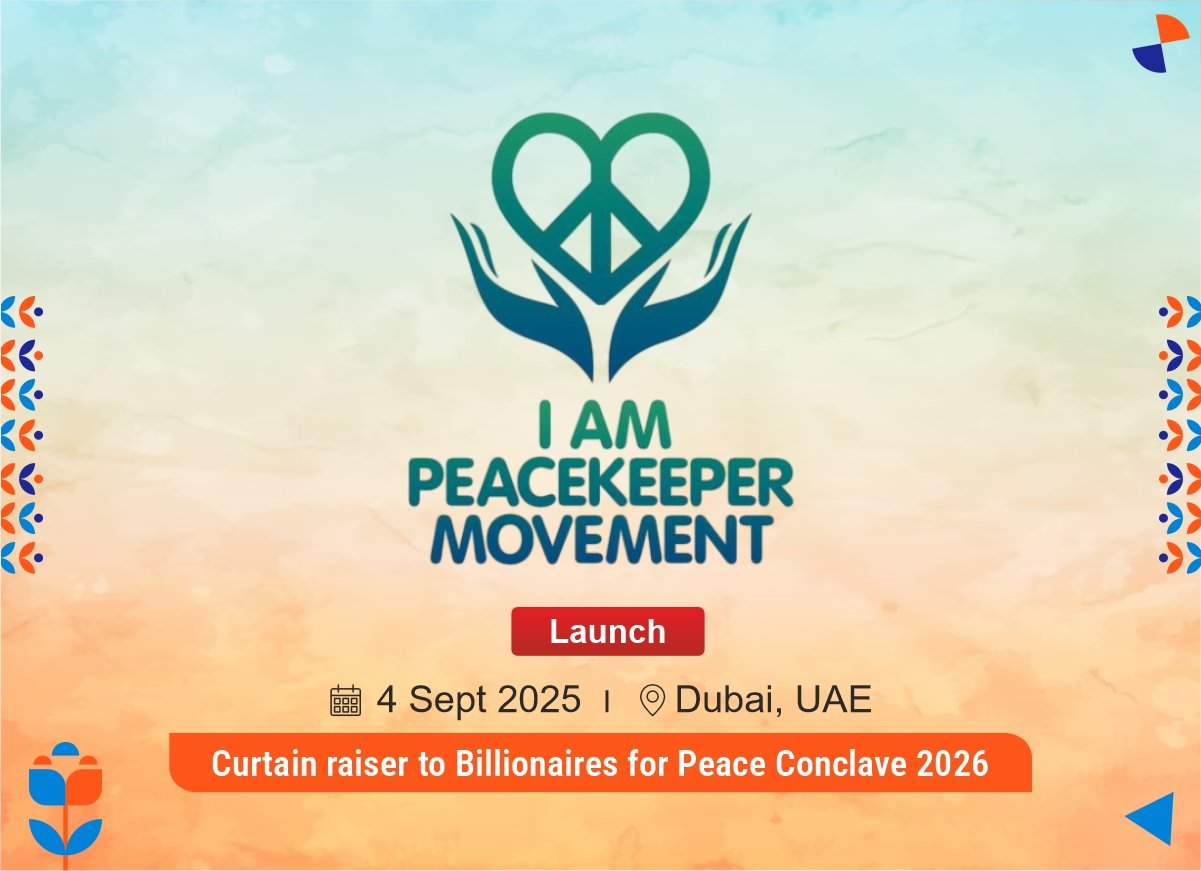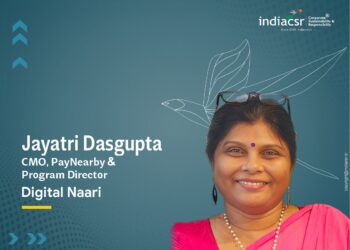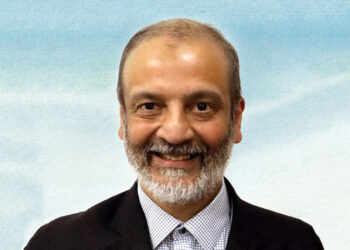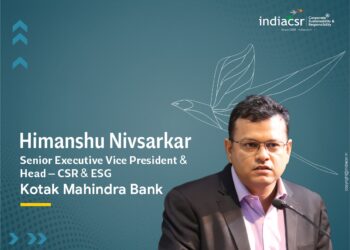Rama Iyer is the Head of WPP Foundation, established in the year 2015. WPP is the world leader in communications services. WPP Foundation aims to take an inch wide and a mile deep approach through its Education to Livelihood (E2L) program towards this key development initiative in India. India CSR Network talks to Rama Iyer. Edited excerpts:
What is the vision of the Foundation? What is the Foundation working to achieve?
We at WPP India CSR Foundation envision to lead the underserved youth in India from improved educational outcomes to informed livelihood choices. We work with the children transitioning between the primary school education to secondary school education, as we believe this is the stage in their lives when they start thinking about their aspirations in life as they pursue their education and plan on securing a livelihood. Our flagship program- Education to Livelihood (E2L) program is driven to achieve this vision.
How has the journey of the Foundation been over the last two years?
Since the launch of the WPP Foundation in 2015, we have moved passionately in identifying our beneficiaries—our children and their communities and then developing partnerships with best-of-breed organizations whose vision aligns with us to lead our children in their life journeys between the ages of 11-18 years.
Since June 2016, we have implemented our Education to Livelihood (E2L) program which benefits almost 20,000 children from 10-government aided schools based in urban slum communities of Mumbai and Delhi NCR. Each child in this program is supported for 7 long years, right from the time when they join the 6th grade in their schools, till they complete the first 6 months of their job placements through our livelihood program at age 18.
We have mobilized every child and the key stakeholder’s in their eco-system through our holistic development programs. School authorities are involved in our program design in their schools and are empowered through our teacher-training and leadership programs. Parents and communities are sensitized about the value of education and livelihood for their child through parent-teacher conferences.
Within the first three-years of our programs, we have geared ourselves towards positive impact in the lives of our children, some of them are highlighted here:
- Our children in the schools have over 90% attendance, which is way above the national average
- Over 70% of our children who attended our livelihood program have secured an employment or are pursuing higher education
- Our school drop-outs are reported to be less than 5%
- We have doubled the ability to code for children through our 20 days of extensive coding program
- We have reduced gender discrimination among our children
- We have increased literacy and numeracy levels among our children
- We have increased confidence within our children
A key change which has also been witnessed within the WPP family, is the mobilization of the Group Company heads and our employees. The WPP Family is ever so eager to engage with our children, bringing them closer to our children through their participation at various school-based events.
Why did WPP decide to set up a Foundation?
WPP is the world leader in communications services. Within WPP and our operating companies, we have the expertise and resources to help raise awareness and realise aims. Effective marketing has the power to shape ideas and change behabiour. It can be a powerful tool to bring about positive change. WPP India has taken a deep dive in supporting development initiatives in the country by creating a single CSR entity for its group companies through the WPP India CSR Foundation. The Foundation has been entrusted with the major responsibility to lead the underserved youth in our country, by providing them a conducive school environment for their growth in mainstream or diverse livelihoods.
What is the key focus areas for WPP Foundation?
At WPP, we believe that education is one of the biggest drivers for social change in India. Most of the children in our foundation, are first generation learners who come from the lower strata of society for whom we want to provide access to equal opportunities. The key focus areas for WPP foundation are education outcomes, job-oriented skills and the targeting of deep-rooted social norms.

To address these areas, we have launched our Education to Livelihood Program, ensuring:
- Retention among our children, by bringing in joy in their learning while they attend our schools and programs.
- Improve academic outcomes for our children by introducing innovative and personalised teaching methods for improving their literacy and numeracy levels.
- Improve work skills within our children by providing them with vocational and job-skills training to help them learn goal setting, interview presentation, communication skills and confidence building.
- Address social norms which hamper the child’s development and growth by reducing discrimination among the children based on gender and caste.
Why did WPP Foundation choose education as a key focus area for the Foundation?
In India, we face a mammoth demographic which is its youth. We at WPP Foundation today want to engage with the future leaders of the country and we identify education as a key medium of connection. Furthermore, if we want to address the development challenge of the country, we will need to help create an encouraging environment for our children through key education initiatives. WPP Foundation aims to take “an inch wide and a mile deep” approach through its Education to Livelihood (E2L) program towards this key development initiative in India.
Please share details on initiatives/programmes undertaken by the Foundation?
We at WPP Foundation aim to mobilise each of our initiatives through our Education to Livelihood (E2L) program, where our key interventions include the following:
 Spoken English Initiative: Since the early days of our programme, a key challenge to address for us was to bring the commercial language of English much closer to our children, who are first generation learners. Through our English learning courses, our children not only learnt to speak the language, they also demonstrated more confidence in their communication.
Spoken English Initiative: Since the early days of our programme, a key challenge to address for us was to bring the commercial language of English much closer to our children, who are first generation learners. Through our English learning courses, our children not only learnt to speak the language, they also demonstrated more confidence in their communication.- Digital Learning Initiative: With the intensive digitization of the world, we want to bring digital technology learning to our children. We have introduced the KANO computer kit, through which our children build their own DIY computers and learn about the computer hardware and software. Through the same computers, our children learn to code and develop gaming applications for themselves. All this and
 more within a month’s training!
more within a month’s training! - Livelihood Initiative: Through our livelihood initiative, we have taken a deep-dive in training our children in becoming more aware about the processes involved in attaining a career and sustaining it. Our children are trained in building their CVs, communicating during an interview, learning to problem solve and set goals. All of this ensur es that when they graduate from our programme, they have the right tools to sustain their livelihoods.
What has been the impact the Foundation has seen?
The Foundation remains in its nascent stage of development, where we are piloting our key initiatives through our Education to Livelihood (E2L) program, to develop a proof of concept which can be later used to scale our initiatives across geographies.
In the last two years of our program, we have witnessed key breakthroughs which we aim to sustain and build on, including:
- Increased engagement of our children in the schools as more than 90% attend school regularly
- Reduced drop-out rates in the schools
- Over 70% of our children graduated from our livelihood program have secured an employment or are pursuing higher education
- We have doubled the ability to code among our children through the 20-day training course
- We have reduced gender discrimination amongst our children
- Improved both literacy and numeracy levels
- Increased the confidence levels of the children.
 We have not only witnessed an impact externally but within WPP, we are also witnessing an impact through the key achievements we have made in the first few years of our program. The WPP family has been mobilised to share their expertise for various initiatives we want to run in our schools, with many of them being present to encourage our kids, who feel more closer to WPP.
We have not only witnessed an impact externally but within WPP, we are also witnessing an impact through the key achievements we have made in the first few years of our program. The WPP family has been mobilised to share their expertise for various initiatives we want to run in our schools, with many of them being present to encourage our kids, who feel more closer to WPP.
What is the geographical spread for your intervention initiatives?
The various intervention initiatives within the Education to Livelihood (E2L) program by the WPP Foundation are conducted across Mumbai and Delhi NCR.
Please share details of some corporates which are supporting the Foundation?
We at the WPP Foundation have developed key partnerships with best-in-class organizations in implementing our Education to Livelihood (E2L) program, reaching out to almost 20,000 children. Our key partnerships are:
- Education: Learning Links Foundation and Hope Foundation
- Soft-skills: Magic India Foundation, Furtado’s School of Music, Shiamak’s Victory Arts Foundation
- Health: Americares India Foundation and Genesis Foundation
- Livelihood: Magic Bus India Foundation and Lend-A-Hand India
What are your future plans?
We are a young Foundation building a proof of concept through pilot initiatives within our Education to Livelihood (E2L) program. Through these pilot initiatives we want to identify key sustainable models that support our children’s journeys from their education to attaining their livelihood.
Once identified, we would want to scale these sustainable models of initiatives across geographies through both government and corporate partnerships. We also aim to take the digital lead in empowering our youth through our key initiatives to support the future digital citizens.
Disclaimer: The views expressed in this feature are entirely their own and does not necessarily reflect the views of India CSR Network and its Editor.
Terms & Conditions: India CSR Network does not permit other Websites/Agency to copy or reproduce or reprint the above article/feature in any form or means.




















